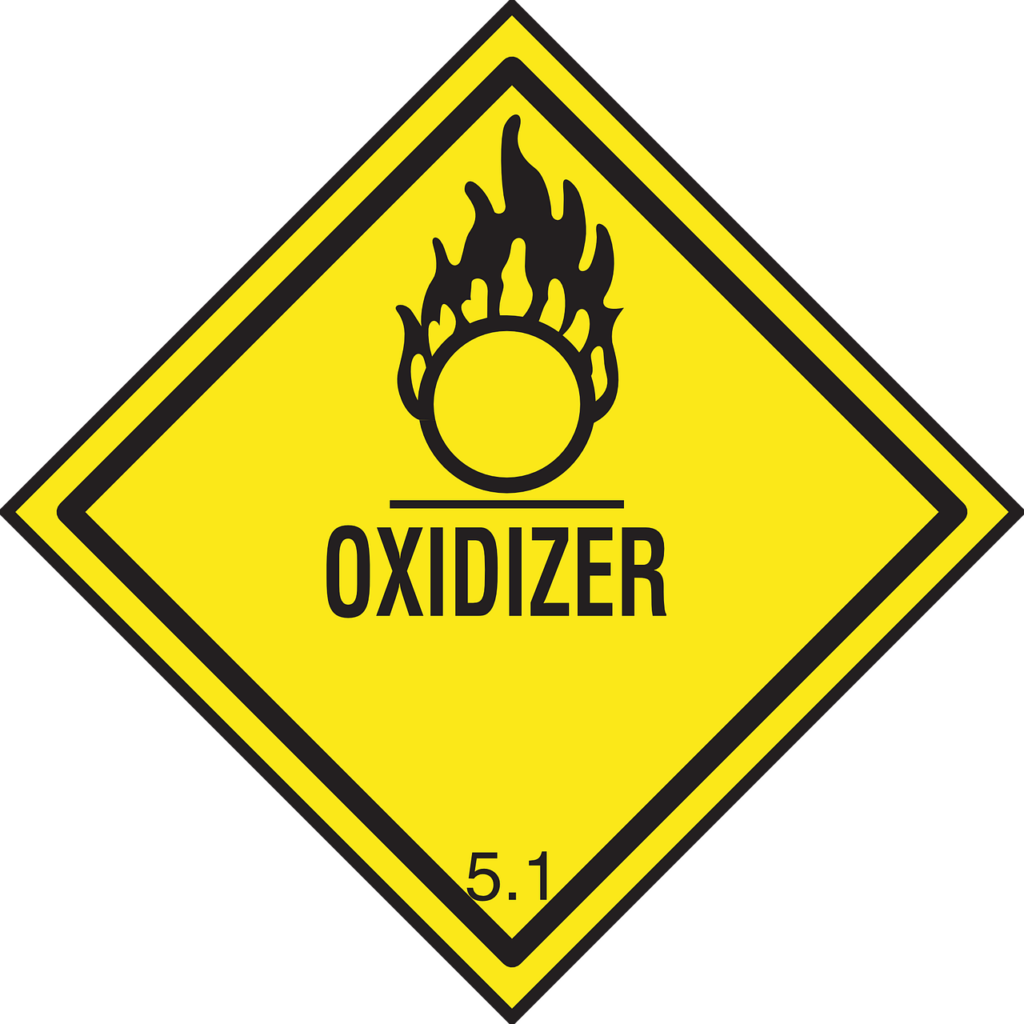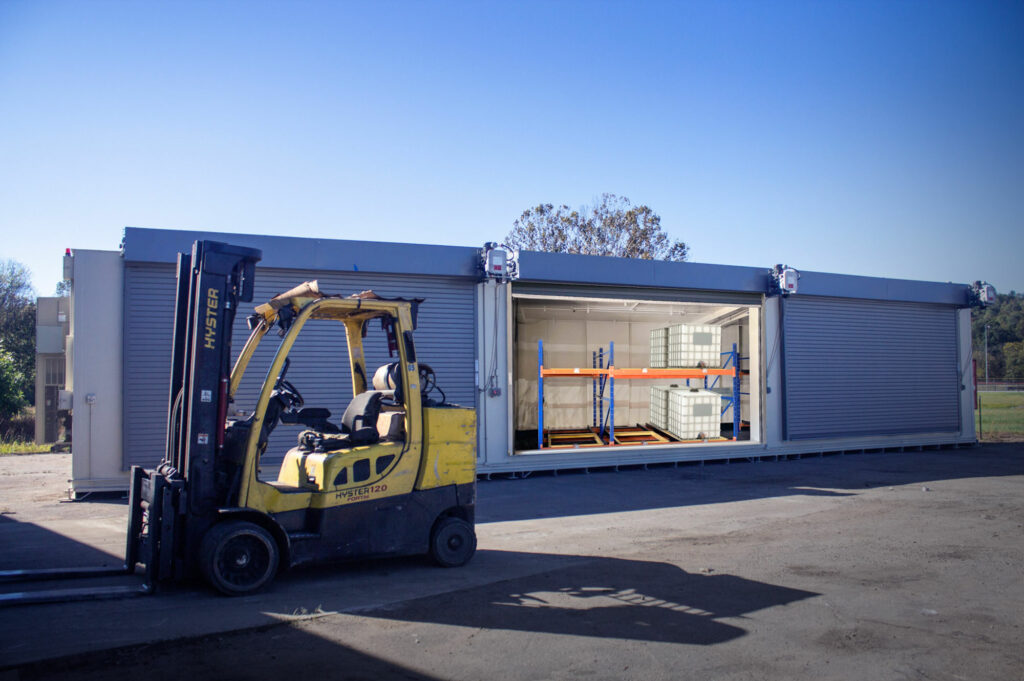U.S. Hazmat Storage is reaching for the stratosphere. Well, maybe not exactly, but we can provide compliant and reliable chemical storage for solid state rocket propulsion fuel and other strong oxidizers. One common explosive agent used in solid state fuels is ammonium perchlorate. An inorganic compound with a colorless and white solid state, ammonium perchlorate is also used as a blasting agent, engraving and etching compound, as well as the fattening of animals. Despite its versatile profile as a catalyst and oxidizer, ammonium perchlorate can create a fire with any combustible material. As a Division 5.1 Oxidizer Health Hazard, it can also cause skin irritation and respiratory issues to exposed personnel who might handle the compound regularly. U.S. Hazmat Storage’s Fire-Rated Chemical Storage Lockers will protect vulnerable personnel while preserving the chemical consistency and integrity of oxidizers and accelerants.
What Are Oxidizers?

Oxidizers are ubiquitous as they are versatile in any chemical manufacturing process. Oxidizing agents can exist in solid, liquid or gas form and readily interact with almost any organic material or reducing agent. Some of the most common examples of oxidizers include hydrogen peroxide, nitric acid, nitrates, perchloric acid and other perchlorate compounds. Oxidizers present a unique intersection or organic and inorganic chemistry. While not necessarily combustible, oxidizers can intensify and accelerate other flammable materials and interactions. What’s truly remarkable, as well as dangerous about oxidizers, is they can continuously fuel a fire – even when oxygen isn’t present. Perchlorate oxidizing compounds can be found in a wide range of industries, including anything from jet fuel and pyrotechnics to textiles and medications.
How To Properly Store Ammonium Perchlorate and Oxidizing Compounds?

Oxidizers should always be kept away from other chemicals, including any compound that falls under the flammable or combustible subtypes of classification. Project managers and safety engineers should also work to ensure oxidizers, including ammonium perchlorate, remain separate from corrosive materials as they can release flammable and toxic vapors should they interact with oxidizing compounds. When it comes to safe and compliant chemical storage, compartmentalization is key. With solid steel welds and partitioned sections, you can storage compatible classifications of hazardous material under the same roof, maximizing efficiency and streamlining production processes. Ammonium perchlorate and other compounds with oxidizing effects should be stored in a cool and dry place away from incompatible materials. Each fire-rated chemical storage locker can also be equipped with a dry chemical fire suppression system to quickly subdue flames in the event of a fire.

Each fire rated chemical warehouse from U.S. Hazmat Storage comes with optional climate control and mechanical ventilation to protect both large and small quantities of ammonium perchlorate and oxidizing agents. These features act to preserve vulnerable stockpiles while keeping personnel and exposed property safe. Having separate and compliant chemical storage can improve workflow operations by streamlining the storage and retrieval of chemicals and precursor products. Roll-up doors also allow for easy access for forklifts and hand trucks used for storing ammonium perchlorate. Contact U.S. Hazmat Storage today for a free quote and consultation.


